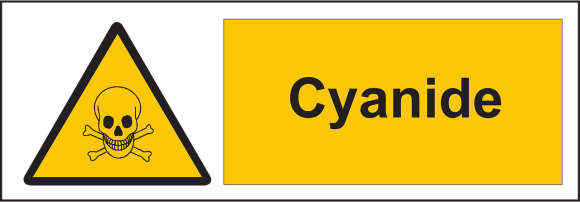 In Ian Fleming’s novels, all 00 agents are issued cyanide capsules in case of enemy capture, but James Bond threw his away. What a dummy. Sure, Bond always escapes, but why risk it? The rest of his peers understood their orders and were ready to die to keep their country’s secrets. Cyanide pills aren’t mere tropes either, but a real spy tool – a gruesome last resort to keep information out of enemy hands [1]. A lethal dose of cyanide kills in minutes – so effective because it blocks the body’s ability to make energy, via this week’s gene of interest: ATP synthase gamma subunit (ATP5C1).
In Ian Fleming’s novels, all 00 agents are issued cyanide capsules in case of enemy capture, but James Bond threw his away. What a dummy. Sure, Bond always escapes, but why risk it? The rest of his peers understood their orders and were ready to die to keep their country’s secrets. Cyanide pills aren’t mere tropes either, but a real spy tool – a gruesome last resort to keep information out of enemy hands [1]. A lethal dose of cyanide kills in minutes – so effective because it blocks the body’s ability to make energy, via this week’s gene of interest: ATP synthase gamma subunit (ATP5C1).
There are few molecules so important that they’re found in all cellular life. DNA for one (obviously), but also the common fuel source for all cells: adenosine triphosphate or ATP [2]. Related to DNA, ATP is an adenine nucleotide with three phosphate groups attached. Think of each ATP molecule like a tiny rechargeable battery. The bonds connecting each phosphate group store the energy that drives the majority of biochemical reactions in the body – from charging neurons to powering muscle movement [3,4].
The charging stations for these molecular batteries are the mitochondria. Metabolites like glucose are broken down inside the mitochondria, one chemical bond at a time, to release energy [5]. ATP synthase, an enzyme embedded in the mitochondria, uses this released energy to make ATP. The gamma subunit (ATP5C1) sits in the center of ATP synthase and rotates to change the shape of the enzyme. For each rotation, ATP synthase adds a phosphate group to ADP (adenosine diphosphate) to make ATP [6]. The cell then distributes these newly minted ATP molecules to power nearly all of its biochemical reactions.

ATP synthase in action. ADP and a phosphate group (pink) attach to one of three sections of ATP synthase. As the gamma subunit (black) rotates, ATP synthase changes shape, combining ADP and the phosphate group into ATP. ATP synthase then ejects the ATP molecule (red) and the cycle repeats [6].
Cyanide pills take advantage of the cell’s lack of energy storage. By binding to another enzyme found in mitochondria, it blocks the cell’s ability to transfer energy from glucose to ATP synthase. No energy means no rotation of the gamma subunit inside ATP synthase, which means no new ATP. Unable to recycle spent molecules, the body burns through its ATP reserves in minutes. It’s effectively like an off-switch for a spy – not a pretty way to go, but effective at keeping state secrets out of the hands of villains like Goldfinger.

References
[1] “Last hero of Telemark: The man who helped stop Hitler’s A-bomb“. BBC. 25 April 2013.
[2] “Nature’s batteries’ may have helped power early lifeforms“. Science Daily. 25 May 2010.
[3] “ATP and Muscle Contraction“. Boundless.com. 7 January 2016.
[4] “Nerve Impulse Transmission within a Neuron: Resting Potential “. Boundless.com. 8 January 2016.
[5] “How Cells Obtain Energy from Food“. (2002) Alberts B, Johnson A, Lewis J, et al. Molecular Biology of the Cell. 4th edition. New York: Garland Science.
[6] Nakamoto RK, Scanlon JAB, Al-Shawi MK. (2008).”The Rotary Mechanism of the ATP Synthase” Arch. Biochem. Biophys. 476 (1): 43–80. PMID 18515057
[7] Kornberg, A. (1989) “For the love of enzymes.”Harvard University Press. Cambridge, MA.Humphery, N. ISBN-13: 978-0674307766.
[8] “How cyanide affects the electron transport chain“. The Biochem Synapse. 13 April 2013.
[…] and myosin is the hand that pulls on that rope. Myosin attaches to actin and (using energy from ATP) pulls on actin sliding it […]
LikeLike